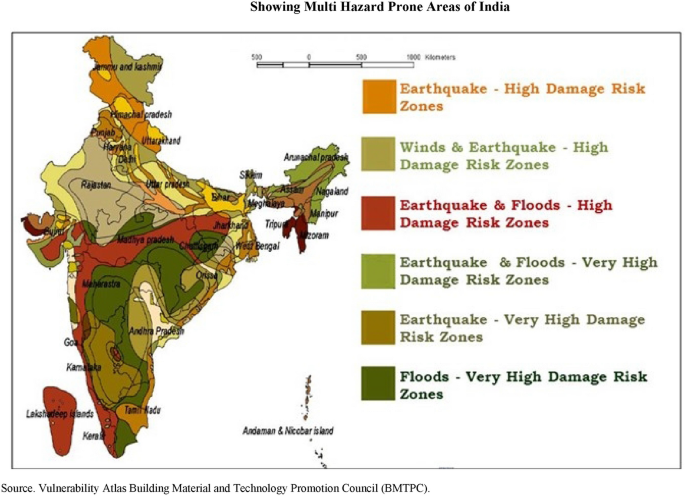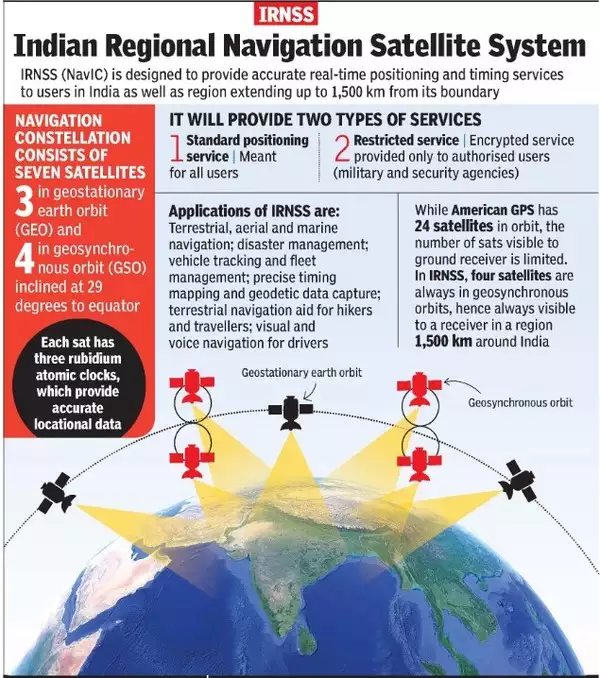



Copyright infringement not intended
Picture Courtesy: THE HINDU
India is shifting from reactive disaster response to a proactive, resilience-focused strategy to tackle growing climate and urbanization challenges.
| Read all about: DISASTER MANAGEMENT l NATIONAL DISASTER MANAGEMENT AUTHORITY (NDMA) |
Disaster resilience is the ability of a community, society, or system to anticipate, withstand, adapt to, and recover quickly from the impacts of a hazard.
For India, building resilience is not an option but a necessity.
 A single major disaster can wipe out years of economic progress, destroy critical infrastructure, and push millions into poverty. Therefore, strengthening resilience through proactive planning, robust infrastructure, and community preparedness is vital to protect lives, livelihoods, and India's development trajectory.
A single major disaster can wipe out years of economic progress, destroy critical infrastructure, and push millions into poverty. Therefore, strengthening resilience through proactive planning, robust infrastructure, and community preparedness is vital to protect lives, livelihoods, and India's development trajectory.
The Disaster Management Act 2005 established a comprehensive legal and institutional framework.
Institutional Structure
The 2005 Act created a three-tiered system with the National Disaster Management Authority (NDMA) at the apex, headed by the Prime Minister, followed by State Disaster Management Authorities (SDMAs) and District Disaster Management Authorities (DDMAs).
Specialized agencies like the National Institute of Disaster Management (NIDM) for training and the elite National Disaster Response Force (NDRF) for specialized response were also established.
Financial Mechanism
Dedicated funds—the State Disaster Response Fund (SDRF) and the National Disaster Response Fund (NDRF)—were created to ensure timely availability of resources.
The 15th Finance Commission allocated ₹2.28 lakh crore (for 2021-26), for disaster management.
Early Warning and Technology
India has invested heavily in technology. The Common Alerting Protocol (CAP) shares timely, geo-targeted alerts in regional languages via SMS and mobile apps.
Specialized apps like FloodWatch, Damini (for lightning), and Mausam provide real-time updates to citizens. This is supported by a nationwide network of Doppler radars and cyclone warning sirens along the coast.
Over-centralization and Weak Local Bodies
Disaster management remains a top-down process. DDMAs lack dedicated staff, budgets, and technical expertise, making them ineffective at implementing local mitigation plans. Village-level disaster management plans often exist only on paper.
Regulatory Failures
Building codes and land-use regulations are poorly enforced. Unchecked construction on floodplains and ecologically sensitive zones continues, making cities like Bengaluru and Chennai highly vulnerable to urban floods.
A vast number of older buildings in high-risk seismic zones are not retrofitted for earthquake safety.
Funding Delays
Delays in the release of funds from the SDRF and NDRF slow down post-disaster relief and reconstruction, prolonging suffering and economic recovery.
Exclusion of Hazards
Many hazards, such as heatwaves, river erosion, and lightning, are still not notified disasters in all states, which prevents access to dedicated funds for mitigation and response.
Disproportionate Impact on the Poor
Poorest citizens live in high-risk areas—informal settlements on floodplains, unstable slopes, or coastal fringes. They live in poorly constructed houses and have minimal savings, making recovery extremely difficult.
Vulnerability of Women and Children
Women and children face heightened risks during and after disasters, including health issues, security concerns in shelters, and increased caregiving burdens. Their specific needs are frequently overlooked in disaster planning.
Climate Change Intensification
Rising global temperatures are making disasters more frequent and intense. Warmer air holds more moisture, leading to deadly cloudbursts in the Himalayas.
Glacial retreat is increasing the threat of Glacial Lake Outburst Floods (GLOFs), as witnessed in the 2023 Sikkim flash flood which was triggered by an outburst from the South Lhonak Lake.
Ecosystem Degradation
Human activities have weakened nature's defenses. Deforestation on hillsides leads to more landslides, while the destruction of coastal mangroves removes natural barriers against storm surges.
Empower Local Governance
Devolve more financial and administrative powers to DDMAs and Panchayats. Mandate and fund village-level disaster management plans to promote community-led mitigation.
Enforce Safe Planning and Construction
Strictly enforce building codes and hazard-zoning regulations. Ban new construction in high-risk zones and make resilience audits mandatory for critical infrastructure like hospitals and schools.
Integrate Climate Adaptation and Nature-Based Solutions
Make climate risk assessment a core part of all development planning. Invest in nature-based solutions like restoring mangroves, rejuvenating urban water bodies, and promoting climate-resilient agriculture.
Leverage Technology for Last-Mile Connectivity
Use AI, satellite imagery, and IoT sensors to develop hyper-local early warning systems. Utilize India's own navigation systems like NavIC to share accurate, location-based alerts.
 Build Social Resilience
Build Social Resilience
Expand community-based programs like Aapda Mitra. Integrate disaster preparedness into school curricula and strengthen social safety nets like crop and property insurance for the most vulnerable.
Mobilize "Risk-Informed" Finance
Increase public and private investment in disaster mitigation. Encourage the development of financial instruments like catastrophe bonds and promote public-private partnerships for building resilient infrastructure.
India’s disaster resilience is hindered by climate risks and unplanned growth; enhancing community preparedness, technology use, resilient infrastructure, and nature-based solutions ensures proactive, sustainable disaster management.
Source: THE HINDU
|
PRACTICE QUESTION Q. India has transitioned from a reactive, relief-centric approach to a proactive and holistic one in disaster management. Critically analyze. 250 words |
India’s framework is based on the Disaster Management Act of 2005. It operates at multiple levels:
The NDRF is a specialized force constituted under the Disaster Management Act, 2005. Its primary role is to provide a specialized response to both natural and man-made disasters, including search and rescue operations. NDRF teams are strategically located across the country to ensure quick deployment.
India's approach has fundamentally shifted from a reactive, relief-centric model to a proactive, prevention-based one. The focus is now on integrating disaster risk reduction (DRR) into development planning and building a culture of preparedness and mitigation among communities.
© 2025 iasgyan. All right reserved